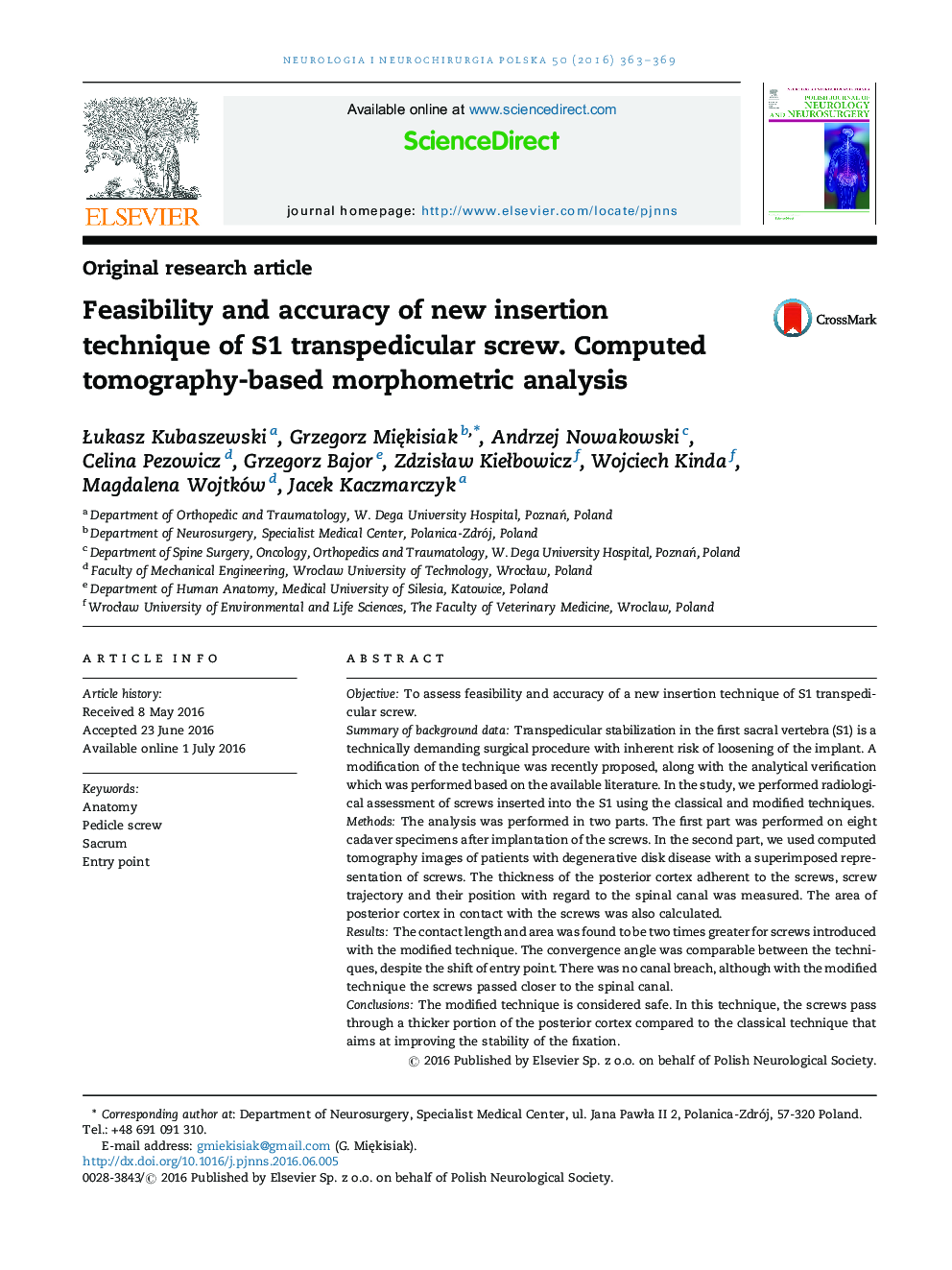| Article ID | Journal | Published Year | Pages | File Type |
|---|---|---|---|---|
| 2152545 | Neurologia i Neurochirurgia Polska | 2016 | 7 Pages |
ObjectiveTo assess feasibility and accuracy of a new insertion technique of S1 transpedicular screw.Summary of background dataTranspedicular stabilization in the first sacral vertebra (S1) is a technically demanding surgical procedure with inherent risk of loosening of the implant. A modification of the technique was recently proposed, along with the analytical verification which was performed based on the available literature. In the study, we performed radiological assessment of screws inserted into the S1 using the classical and modified techniques.MethodsThe analysis was performed in two parts. The first part was performed on eight cadaver specimens after implantation of the screws. In the second part, we used computed tomography images of patients with degenerative disk disease with a superimposed representation of screws. The thickness of the posterior cortex adherent to the screws, screw trajectory and their position with regard to the spinal canal was measured. The area of posterior cortex in contact with the screws was also calculated.ResultsThe contact length and area was found to be two times greater for screws introduced with the modified technique. The convergence angle was comparable between the techniques, despite the shift of entry point. There was no canal breach, although with the modified technique the screws passed closer to the spinal canal.ConclusionsThe modified technique is considered safe. In this technique, the screws pass through a thicker portion of the posterior cortex compared to the classical technique that aims at improving the stability of the fixation.
